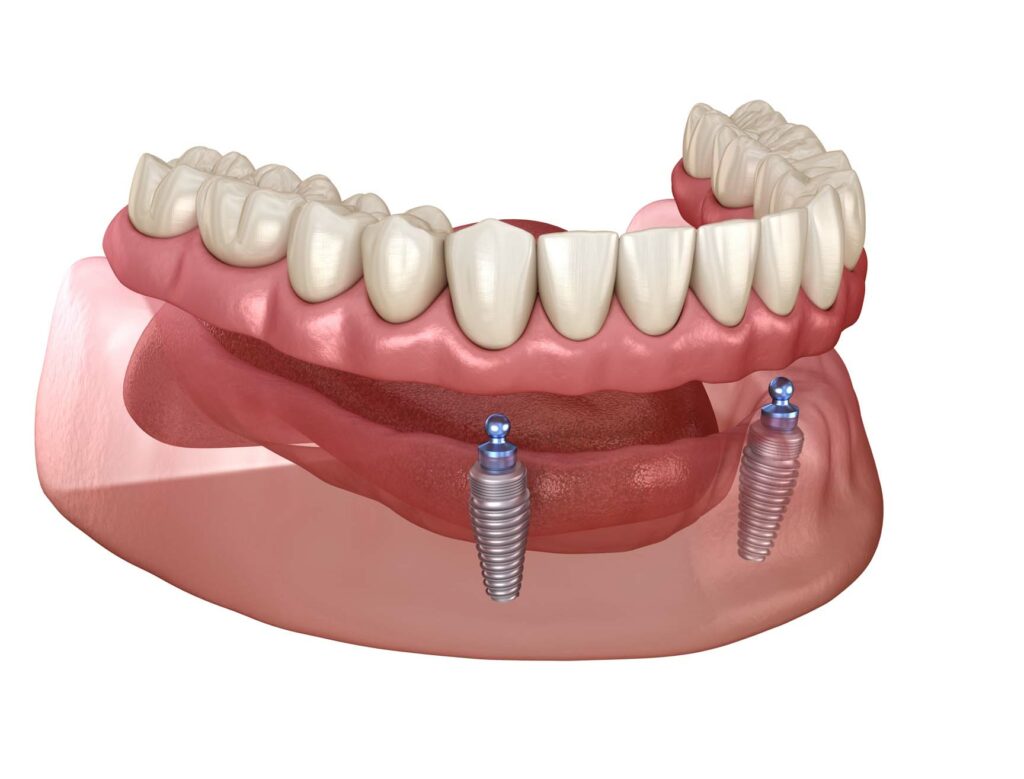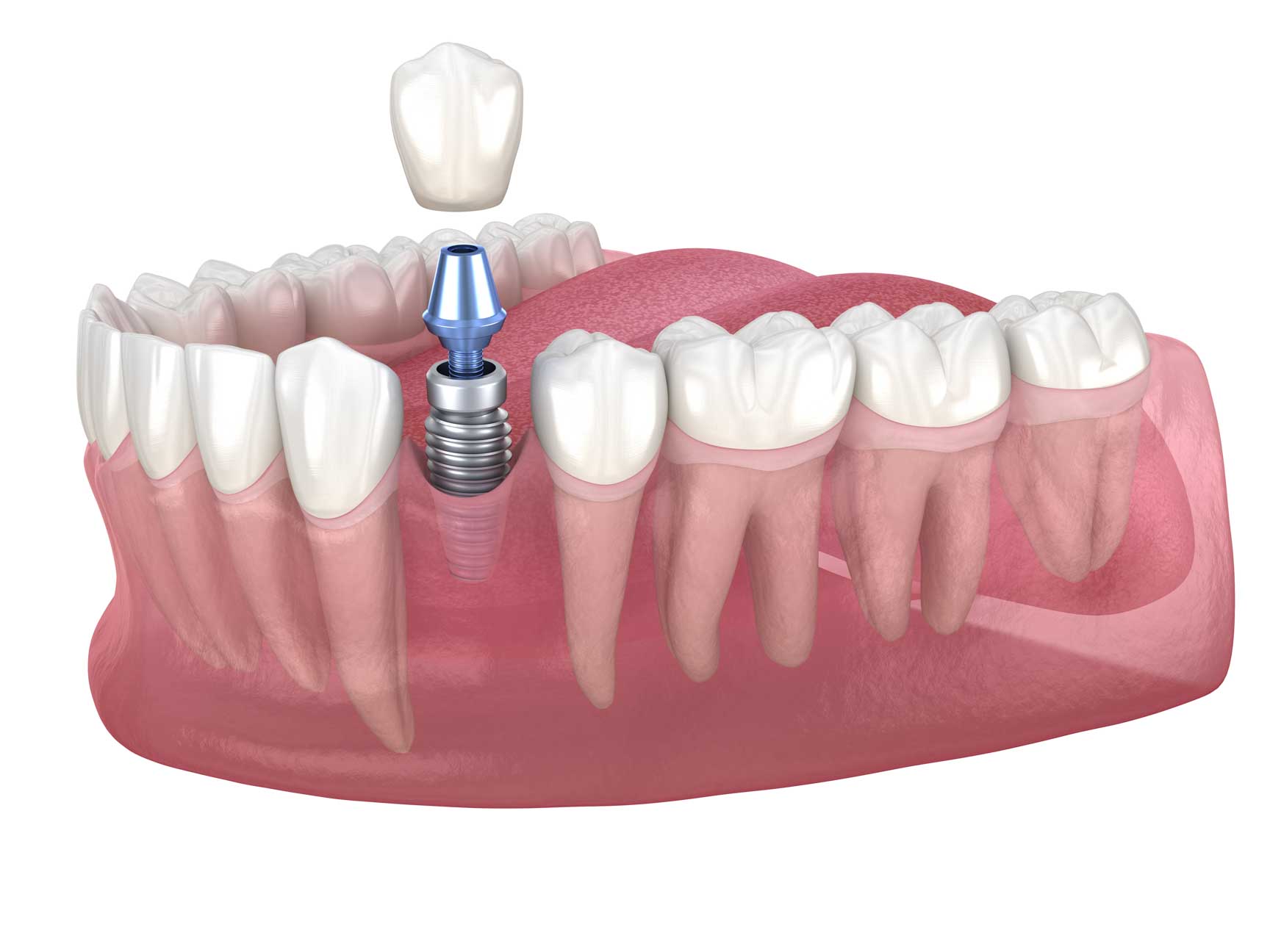Dental implants are changing the way people live! They are designed to provide a foundation for replacement teeth which look, feel, and function like natural teeth. The person who has lost teeth regains the ability to eat virtually anything and can smile with confidence, knowing that teeth appear natural and that facial contours will be preserved.
What are Dental Implants?
Dental implants are small titanium posts that are surgically placed into the jawbone where teeth are missing. These metal anchors act as tooth root substitutes. The bone fuses with the titanium, creating a strong foundation for artificial teeth. Dental implants also help preserve facial structure, preventing the bone deterioration that occurs when teeth are missing.
The Surgical Procedure
For most patients, the placement of dental implants involves two surgical procedures. First, implants are placed within your jaw. Healing time following surgery varies from person to person and is based on a variety of factors, such as hardness of bone. In some cases, implants may be restored immediately after they are placed.
For the first three to six months following the surgery, dental implants are beneath the surface of the gums gradually bonding with the jawbone. Temporary teeth can be utilized during this healing period. At the same time, we design the final crowns, bridgework or denture that will ultimately restore both the function and aesthetics of your mouth and smile.
What is the next step after I've had an implant procedure?
After the area has healed for a short period of time, we attach a small post onto the implant that protrudes through the gums. This post will provide stable anchors for an artificial replacement tooth.
What Types of Prosthesis are Available?
A single prosthesis (crown) is used to replace one missing tooth – each prosthetic tooth attaches to its own implant. Using several implants it is often possible to replace many lost teeth. A complete dental prosthesis (fixed bridge) can also replace all the teeth in your upper or lower jaw. The number of implants used varies depending upon which type of complete prosthesis (removable or fixed) is recommended. A removable prosthesis (overdenture) attaches to a bar with snap-on attachments, whereas a fixed prosthesis is permanently cemented or screwed in and can only be removed by a dental professional.

Evaluation
If, like many others, you feel implant dentistry is the choice for you, we ask that you undergo a dental/radiographic examination and health history. During these consultation visits, we will address your specific needs and considerations. Your questions and concerns are important to us and our team will work with you very closely to help make your procedure a success. We will also discuss fees and insurance at this time. There are many types of insurance plans, and coverage for implants is varied. We will be happy to assist you in obtaining any benefits to which you may be entitled.







